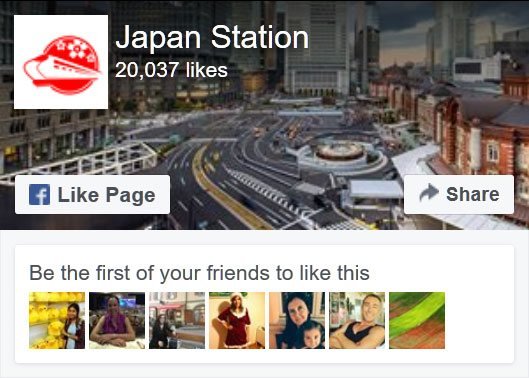Ueno Toshogu is a 17th century Shinto shrine in Ueno Park. The golden buildings of the shrine are remarkable for having survived the Battle of Ueno in 1868, the Great Kanto Earthquake in 1923, and the Tokyo firebombing of 1945. This makes the shrine a rare example of early Edo era architecture in Tokyo, and several of its structures are officially designated as Important Cultural Properties.

The gate of Ueno Toshogu Shrine with the main building behind it
The History of Ueno Toshogu
Ueno Toshogu is dedicated to the spirit of Tokugawa Ieyasu (1543–1616) who was the first shogun (or military leader) of the Tokugawa shogunate that ruled Japan from 1603 to 1868. This shrine was first built in 1627 by a lord called Todo Takatora (1556 – 1630). At that time Todo Takatora had a residence on Ueno Hill and he had the shrine built on his grounds as a memorial to the first shogun who he had served.
Originally the shrine was called Toshosha, but it was renamed Toshogu in 1645, as that is the official name for shrines dedicated to Tokugawa Ieyasu. The shrine was then rebuilt in 1651 by the third shogun, Tokugawa Iemitsu (1604–1651) who was the grandson of Ieyasu. The current buildings with their gold leaf decoration and colorful carvings date from this time. In addition to Tokugawa Ieyasu, the spirits of the 8th shogun Tokugawa Yoshimune (1684–1751), and the 15th and last shogun Tokugawa Yoshinobu (1837–1913) are also enshrined in Ueno Toshogu.
On the Shrine Grounds
The outer grounds of Ueno Toshogu Shrine are free to enter. However, if you want to go beyond the Karamon Gate and have a closer look at the Honden (the main building) you will have to pay an entry fee of 500 yen. The Honden is always closed however, so you can only view it from the outside.

Bronze lanterns on the shrine grounds
There are 48 bronze lanterns on the outer shrine grounds which were donated by lords from all over Japan. These lanterns are only used for ritual ceremonies and are designated Important Cultural Properties.

The Pagoda of Kaneiji Temple
Although the Five-Storied Pagoda of Kaneiji Temple is now on the grounds of Ueno Zoo, it can be clearly seen from Toshogu Shrine. Previously this Buddhist structure was part of the shrine’s grounds and was known as the Toshogu Pagoda. Historically Shinto and Buddhist religious beliefs were often mixed and it was not unusual to have a Shinto shrine building within a Buddhist temple, or a Buddhist building within a Shinto shrine. Toshogu Shrine was itself part of the Buddhist Kaneiji Temple complex until 1868 when many of the temple buildings were destroyed by fire.
In the late 19th century the Meiji government forced the clear separation of the Shinto and Buddhist religions and many Buddhist pagodas that stood on shrine grounds were destroyed. At that time, the chief priest of Ueno Toshogu wanted to save this pagoda, so he changed its name to Kaneiji Pagoda and told the authorities that it belonged to Kaneiji Temple. Kaneiji Temple later donated the pagoda to Tokyo Metropolitan Government, who then gave it to Ueno Zoo.

The united flame of Hiroshima and Nagasaki is enshrined in a peace monument at Ueno Toshogu Shrine
On August 6th 1945 the world’s first atomic bomb was dropped on the city of Hiroshima, and a second one was dropped on the city of Nagasaki on August 9th. The flame on display at Ueno Toshogu is a symbol of peace and of the hope that such weapons will never be used again. This flame was created in 1988 by merging two flames: one taken from a fire started by the original atomic bombing of Hiroshima, and one created by sparks from roof tiles in Nagasaki. This monument to peace was established here in 1989.

Inside Ueno Toshogu’s peony garden
The Peony Garden
Ueno Toshogu has a famous peony garden with flowers that bloom twice a year: in the winter and in the spring. Because the peony was first introduced to Japan from China, the shrine’s peony garden is a symbol of friendship between the two countries. You can view the flowers in the peony garden from January 1st to mid-February, and again from mid-April to late May. There are over 500 different peonies in the garden, including French, American and Chinese varieties which all bloom in many splendid colors. However, the entry fee for the garden is a little expensive at 700 yen, so if you are not a big peony fan you may decide to skip this part of the shrine.

Spring season peonies
Opening Hours:
January 1st – mid-February: 9.30 – 16.30
Mid-April – late May: 9.00 – 17.00

Kaneiji Pagoda viewed from the peony garden
Location
Ueno Toshogu Shrine is located on the west side of Ueno Park. It is an 8 minute walk from the Park exit of JR Ueno Station, 7 minutes from Keisei Ueno Station, 9 minutes from Ueno Subway Station on the Tokyo Metro Hibiya and Ginza lines, and 12 minutes from Nezu Station on the Tokyo Metro Chiyoda Line. Here is a map showing its location.
Admission: Free to the outer shrine grounds,
500 yen to view the inner shrine buildings,
and 700 yen for the peony garden.
Opening Hours:
October – February: 9:00 – 16:30
March – September: 9:00 – 15;30
Article and original photos by Michael Lambe. All rights reserved.
